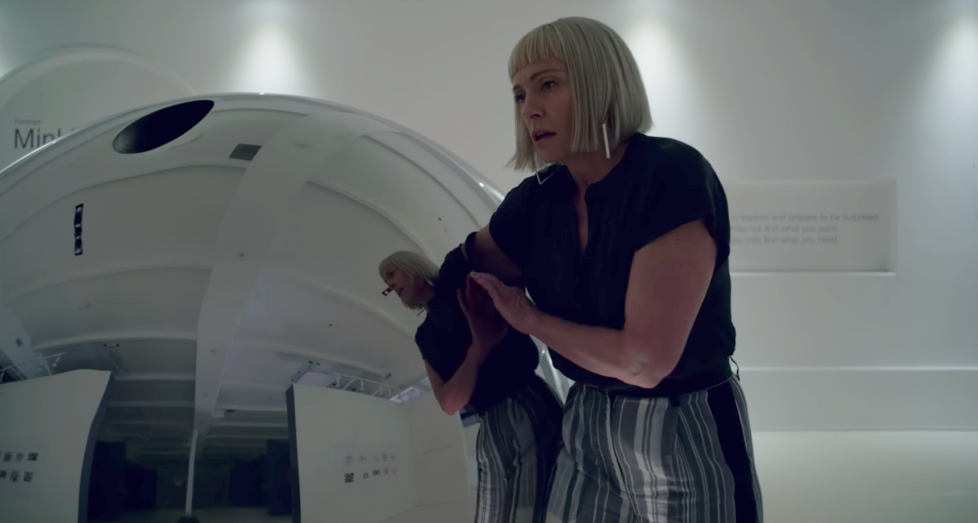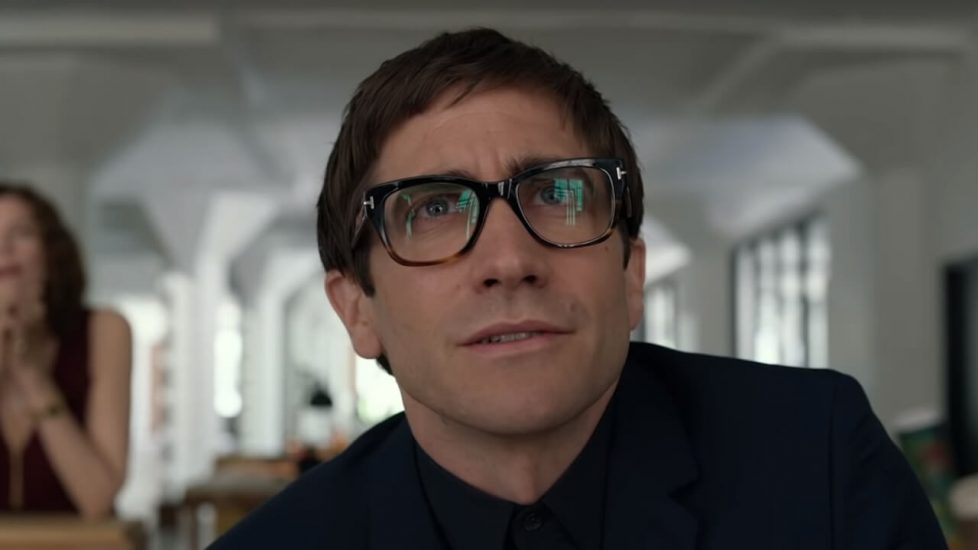

We Asked For It
First published here.
Netflix has discovered the TV version of the golden ratio: stars, scares, and sex within the first fifteen minutes. Director Dan Gilroy’s parodic horror set in the Los Angeles art world, Velvet Buzzsaw (2019), delivers on all three. The plot, though somewhat beside the point in this film, is as follows: an abused ‘gallerina’ (named Josephina and played by Zawe Ashton) uncovers a hoard of haunted neo-romantic expressionist paintings in the apartment of a deceased tenant in her building. Named Vetril Dease, he becomes the art world’s greatest posthumous revelation, thanks to a cunning gallerist, Rhedora Haze (Rene Russo). From here, the narrative follows a predictable schlock horror arc.
The beauty of Netflix is that it makes it feel as if you can watch whatever trash takes your fancy without having to account for it to anyone in your real life. The truth, however, is that, not unlike Velvet Buzzsaw’s savant art critic Morf Vandewalt (Jake Gyllenhall), Netflix knows exactly what you watch and how you watch it. Its hugely successful production machinery is a feedback loop built on observation of our collective viewing behaviours. Out of this issues one of the more sobering characteristics of Velvet Buzzsaw: we asked for it.
The sex starts out with promise. In the thirteenth minute of the film, a jilted and vengeful Josephina exploits the sexual confusion of Vandewalt – hitherto gay – by drawing his hand between her legs in a drunken post-opening hookup. After a lingering shot of the bewildered critic’s forearm vanishing into the darkness under her skirt, Netflix retreats to a few scattered shots of male rear ends for the rest of the film. This opening reference to Gustave Courbet’s 1866 painting The Origin of the World is a bit coarse, but pokes fun at art-historical clichés about the artist’s neutral, disinterested gaze before a nude. The scene also primes the viewer for a recurring motif: arms reaching into orifices and out of paintings. Dease’s haunted paintings’ preferred method of tormenting their victims is through hands that grasp at them from within the picture.
Velvet Buzzsaw is pitched as a horror film, a genre in which Netflix is currently excelling commercially. The intended source of fear in the film is the content of Dease’s paintings, expressionistic scenes populated by ghoulish children with sunken eyes, fires, and one particularly mean-looking man who is meant to be Dease’s abusive father. Though unlikely, Dease’s paintings could well have been made after a set design team field trip to Bergen’s KODE 3. The latter is home to a collection of exemplary Norwegian romantic expressionist works, in which Edvard Munch features heavily. The swirling skies in the background of a Dease painting of a family alongside a bonfire are essentially cribbed from Munch’s most famous work, The Scream (1883). The bonfire itself – into which Dease has snuck a human-shaped profile – recalls the midsummer bonfires painted by Nikolai Astrup, by now used to playing second fiddle to Munch in the public domain. This is not the first time Norwegian Romantic Expressionism has made a cameo in schlock horror: The Scream, of course, inspired the killer’s mask in the 1996 film Scream.
Nineteenth-century European Romanticism and the genre of horror come from the same cultural moment: the coalescence of scientific developments, colonial ‘discovery’, and naturalist philosophy of the time produced a climate of preoccupation with the unknown. In this respect, the directorial conceit that Dease the romanticist is now a murderous ghost is not out of place
Having few other hooks, Velvet Buzzsaw hangs its hopes on a cast of Hollywood A-listers: besides Russo (also Gilroy’s wife), Gyllenhall, Ashton, and Toni Colette, there are Daveed Diggs, Tom Sturridge, Natalie Dyer, and John Malkovich. Sturridge plays Jon Dondon, an obnoxious upstart South African gallerist who prowls art fairs trying to poach artists from blue-chip galleries. Malkovich is the lead poachee: Piers, an artist stuck in a mid-career rut after having quit drinking. Between them, Gilroy’s characters demonstrate the very worst of the art world: price-fixing, insider-trading, museum-bullying, and a bought-off critic who is oblivious to his complicity.
What could Netflix possibly want with this crude art world takedown? A lot, it would seem. According to an interview in the Hollywood Reporter, Gilroy says that Netflix gave Velvet Buzzsaw a production budget that was beyond consideration for any of the Hollywood studios he initiatlly approached. In the same intervew, he explains that he had a “very collaborative relationship with Netflix. They were an integral part of the team creating this movie” (italics in the original). Netflix saw a commercial opportunity in the muck lodged in the engine of the art world.
That this muck obscures the line between reality and fiction suits contemporary entertainment very well. On-demand TV, altered reality entertainment, and meta-thrillers like the series Black Mirror all rely to some degree on the vanishing of clear-cut make-believe, but also on the viewer’s self-conscious enjoyment of the loss of this clarity. The growth of metafiction into a mainstream genre has happened parallel to the widespread acceptance of the notion of ‘post-truth’ as a category that disavows both truth and lies. To suggest a casual relationship would be to go too far, but the coincidence of the post-truth era and the massive commercial success of metafictional entertainment suggests that there is a new popular tolerance for these related phenomena. In experimenting with metafictional forms and references, Netflix is merely demontrating its ability to read the market.
In Velvet Buzzsaw, we see the metafictional in the many, very thinly veiled references to real life art world characters and occurences, as in the film’s big gore moment, the death scene of Gretchen (Colette), a corrupt museum curator who transitions to the more lucrative role of art advisor. Gretchen’s character is a reference to the disgraced former curator of Amsterdam’s Stedelijk Museum, Beatrix Ruf, who in 2017 was found to be consulting for a private collector alongside her museum position. Gretchen comes to a gruesome end when, on the night before an exhibition opening, she sticks her arm into a participatory sculpture titled Sphere. The work graunches her arm off above the elbow, and she bleeds out. The morning of the opening, the museum guards assume her dead body and the pool of blood are part of the installation and let the crowds in. This recalls a recent milestone in the real art world’s inability to tell truth from fiction, in which a visitor to the 2015 edition of Art Basel Miami Beach was stabbed at the fair and momentarily left for performance art.
Velvet Buzzsaw’s confrontation of the commercial art world’s crookedness, particularly in such a mainstream context, might come off as brave, but Gilroy never gives his critique space to develop. Instead, he bounces the plot between farcical villains until most of them are dead. One can feel this cynical resignation in a line delivered by Vandewalt early on in the film: “Critique is so limited and emotionally draining.” There is a distinct sense in the film that criticism, in general, is irrelevant, even silly. Critics are more or less irrelevant to Netflix. Because Netflix saves so much time and money with direct distribution, it can afford to be ‘risk-taking’. Only a very small percentage of the global population’s attention – and only for a few minutes – is needed to make a film profitable. Its success in the post-truth economy goes hand in hand with its greatest triumph: Netflix is post-failure.